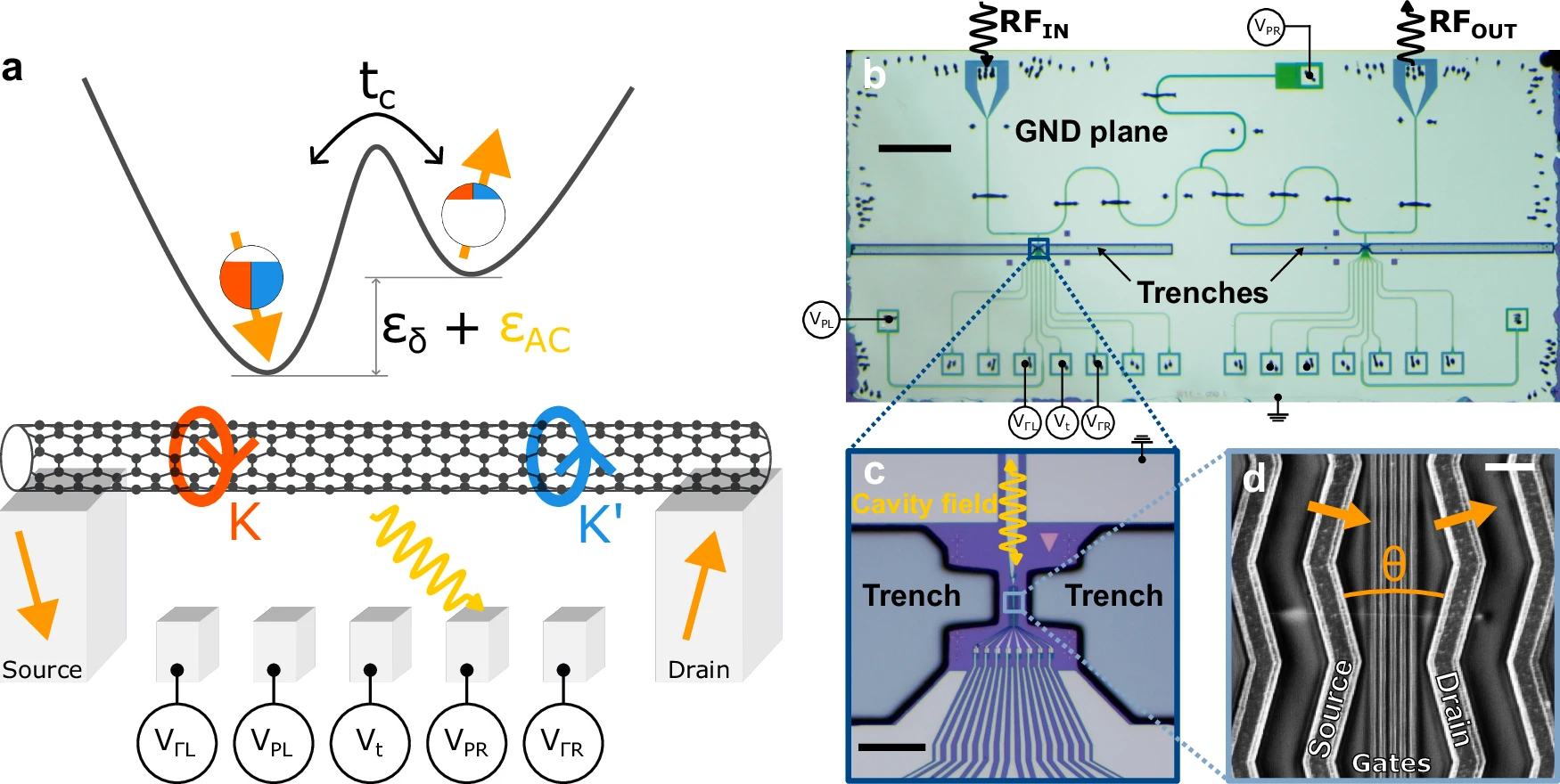
Researchers from C12 and ENS (École Normale Supérieure) have published findings in Nature Communications demonstrating coherent control of quantum states within a carbon-based circuit. The study reports a coherence time of approximately 1.3 microseconds for a carbon-based spin qubit. This value represents the longest coherence time reported for a carbon quantum circuit and is an order of magnitude higher than that observed in silicon-based quantum dots under comparable environmental conditions.
The experiment involved the manipulation of quantum states within a suspended carbon nanotube double quantum dot, which included ferromagnetic contacts and was embedded in a microwave cavity as part of a circuit quantum electrodynamics (cQED) setup. Quantum manipulations were performed via cavity photons. The system operates at a temperature of approximately 300 mK and enables coherent control of quantum states at zero external magnetic field. Analysis of decoherence mechanisms suggests that cotunneling is the dominant factor limiting coherence in this system.
This achievement indicates the potential of carbon nanotubes as a host material for spin qubits within cQED architectures. The observed coherence time for quantum dots embedded in cavities suggests a path toward scalable quantum architectures with reduced noise. The research highlights that suspended carbon nanotube devices may offer advantages such as lower charge noise, due to the distance from oxides, and the possibility of future oxide-free designs. Further advancements, potentially involving isotopically purified ¹²C nanotubes and high-impedance resonators, could enable high-fidelity quantum gates and extended coherence times.
Read the full paper in Nature Communications here.
July 2, 2025

